PostgreSQL实时查看数据库实例正在执行的SQL语句实例详解
技术很渣 人气:0一、查询当前正在执行所有SQL语句
SELECT pid, datname, usename, client_addr, application_name, STATE, backend_start, xact_start, xact_stay, query_start, query_stay, REPLACE ( query, chr( 10 ), ' ' ) AS query FROM ( SELECT pgsa.pid AS pid, pgsa.datname AS datname, pgsa.usename AS usename, pgsa.client_addr client_addr, pgsa.application_name AS application_name, pgsa.STATE AS STATE, pgsa.backend_start AS backend_start, pgsa.xact_start AS xact_start, EXTRACT ( epoch FROM ( now( ) - pgsa.xact_start ) ) AS xact_stay, pgsa.query_start AS query_start, EXTRACT ( epoch FROM ( now( ) - pgsa.query_start ) ) AS query_stay, pgsa.query AS query FROM pg_stat_activity AS pgsa WHERE pgsa.STATE != 'idle' AND pgsa.STATE != 'idle in transaction' AND pgsa.STATE != 'idle in transaction (aborted)' ) idleconnections ORDER BY query_stay DESC
二、判断是否存在慢查询语句
| 字段 | 解释 |
|---|---|
| PID | 数据库查询进程ID |
| query_stay | 查询时长秒 |
| query | 查询SQL语句 |
三、按查询进程,杀掉慢查询释放资源
SELECT pg_terminate_backend(PID); SELECT pg_terminate_backend(6289);
四、扩展query的显示长度能展示出全部语句


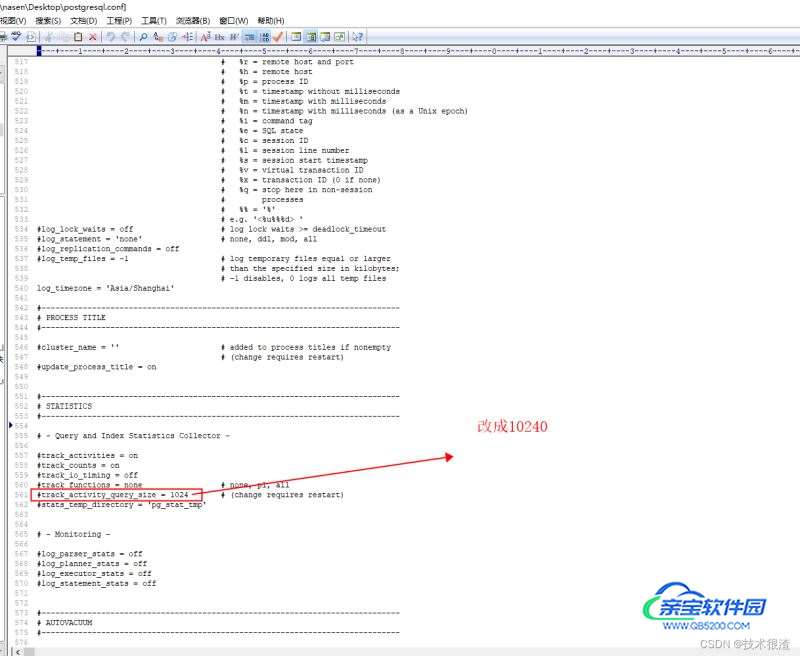
vi /var/lib/pgsql/12/data/postgresql.conf
修改track_activity_query_size的值重启数据库服务
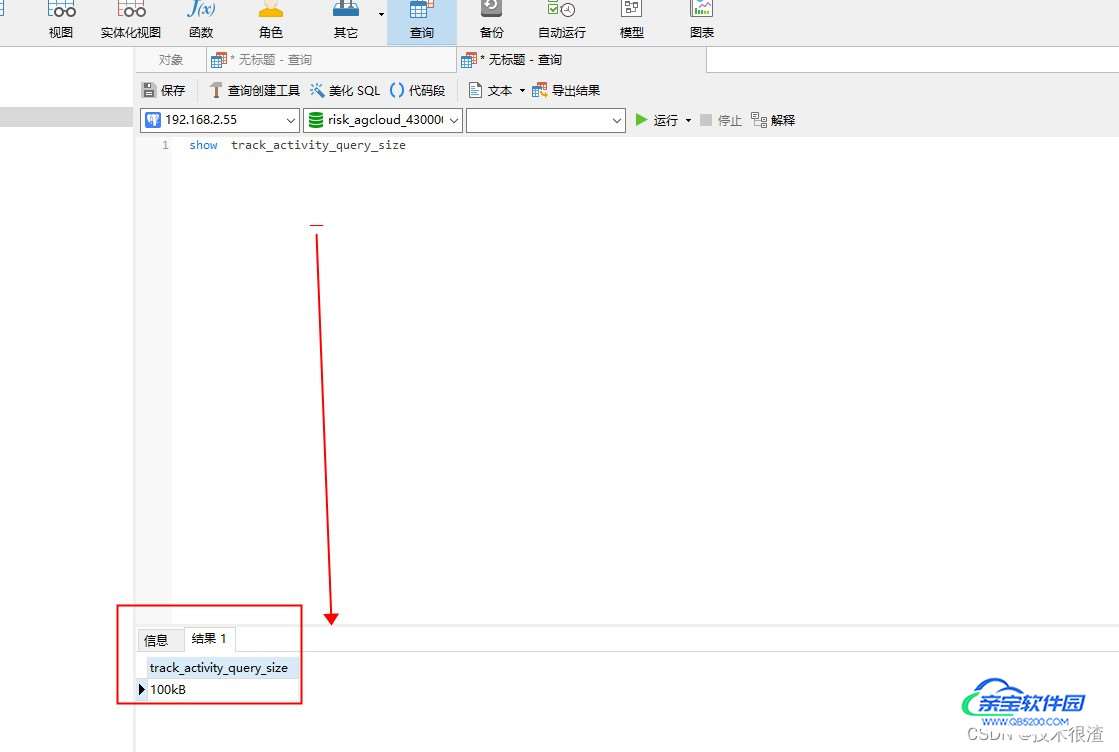
五、杀掉某个数据库的所有数据库连接
SELECT pg_terminate_backend(pg_stat_activity.pid)FROM pg_stat_activity WHERE datname='数据库名称' AND pid<>pg_backend_pid();
六、导出数据库某个表
pg_dump -t 某个表名 "host=192.168.16.31 port=18921 user=postgres password=数据库密码 dbname=数据库" -f /app/zjfbeifen/1.sql
七、shell脚本自动导入按表
touch insert_sql.sh
#!/bin/bash . /etc/profile . ~/.bash_profile export PATH=/usr/pgsql-12/bin:/usr/bin; export PGPASSWORD=数据库密码;psql -U postgres -d 数据库名称 < /mnt/nas/bak-06/1.sql;
指定postgres用户执行导入某个表的语句,免密执行shell脚本
touch nasen_insert.sql
#!/bin/sh source /etc/profile PATH=/usr/local/bin:$PATH echo 'task_start' runuser - postgres -g postgres -c "sh /data/test/insert_sql.sh" echo 'task_finish'
定时器配置
00 10 * * * /usr/bin/sh /data/test/insert_nasen.sh >>/data/test/insert_nasen.log
八、shell脚本执行postgre的sql语句
touch drop01.sql
#删除某个表SQL语句
DROP TABLE IF EXISTS public.test;
touch drop.sh
#!/bin/bash . /etc/profile . ~/.bash_profile export PATH=/usr/pgsql-12/bin:/usr/bin; #su postgres export PGPASSWORD=123456;psql -U postgres -d 数据库名称 < /data/test/drop01.sql;
touch nasen_drop.sh
#!/bin/bash source /etc/profile PATH=/usr/local/bin:$PATH echo 'task_start' runuser - postgres -g postgres -c "sh /data/test/drop.sh" echo 'task_finish'
定时器调用
00 9 * * * /usr/bin/sh /data/test/drop_nasen.sh >>/data/test/drop_nasen.log
九、导出导入整个数据库
备份导出整个数据库
pg_dump -h localhost -U postgres -d riskDataCheck -Fc -f /soft/backup/20220321/test-0321.dump
导入某个数据库
pg_restore -h localhost -U postgres -d risk_agcloud_430000_1 /soft/backup/test-0321.dump
十、切换数据库存储路径迁移data目录
步骤1:创建新data目录
sudo mkdir /home/data
sudo chown -R postgres:postgres data
sudo chmod 700 data
步骤2:关闭数据库服务
systemctl stop postgresql-12
步骤3:执行复制
cp -rf /var/lib/pgsql/12/data/* /home/data #这个路径是默认的在线安装postgresql12.11默认路径
sudo chown -R postgres:postgres data #加这句是因为复制过来有的时候归属是ROOT用户,应该是postgres用户才对!
步骤4:修改服务配置文件
cd /usr/lib/systemd/system
vi postgresql-12.service #默认的在线安装postgresql12.11服务名称
Environment=PGDATA=/home/data
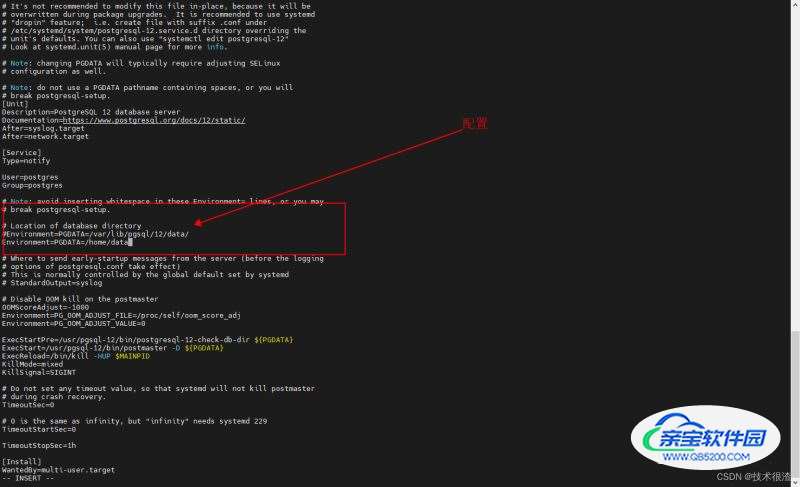
步骤5:重新加载服务配置
systemctl daemon-reload
步骤6:重启数据库服务
systemctl start postgresql-12
步骤7:查看变更状态
systemctl status postgresql-12
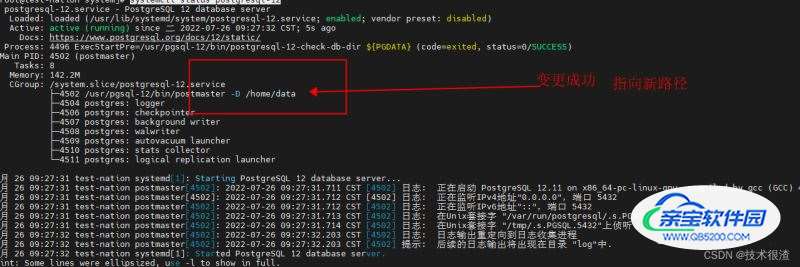
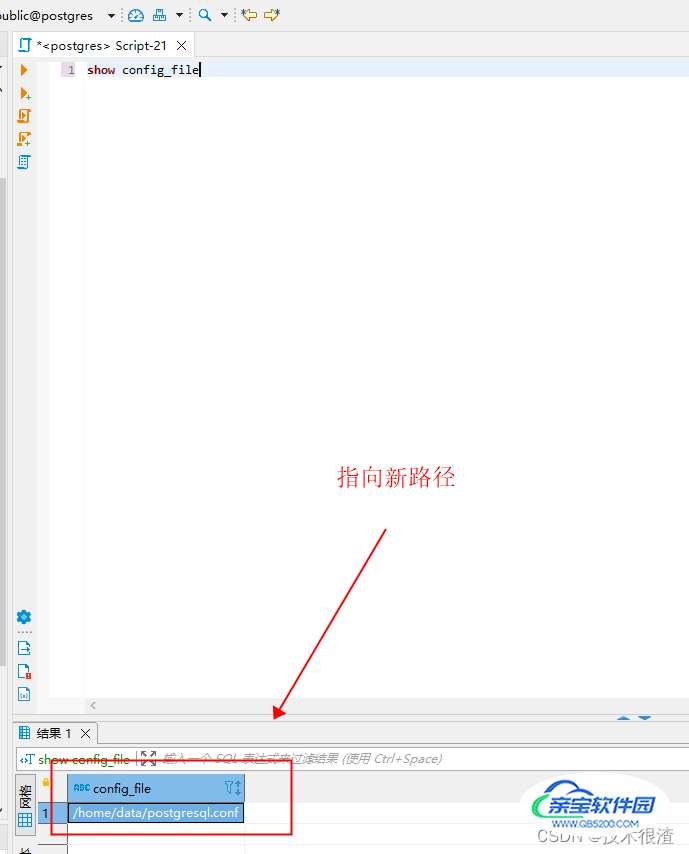
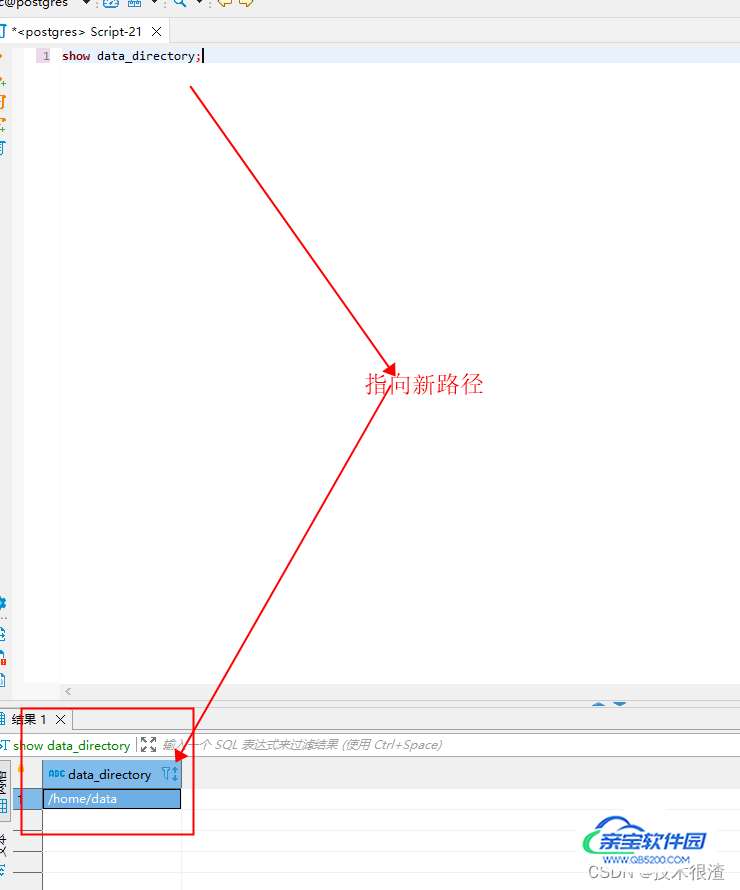
十一、安装PostGIS插件
步骤1:安装postgis的依赖包
rpm -ivh https://mirrors.aliyun.com/epel/epel-release-latest-7.noarch.rpm
步骤2:安装postgis
yum install postgis31_12.x86_64 #这个对版本有一些对应关系注意,这个命令对应的是12.X
步骤3:安装完毕后切换为postgres用户,开启扩展初始化操作
// 开启插件
# su postgres # psql // 开启pgsql的插件 postgres=# create extension postgis; postgres=# create extension postgis_topology; postgres=# create extension fuzzystrmatch; postgres=# create extension address_standardizer; postgres=# create extension address_standardizer_data_us; postgres=# create extension postgis_tiger_geocoder; //查看版本,验证安装是否成功 postgres=# SELECT PostGIS_full_version();
步骤4:安装pgRouting
yum install pgrouting_12 #针对12.X版本
步骤5:检查插件是否完成
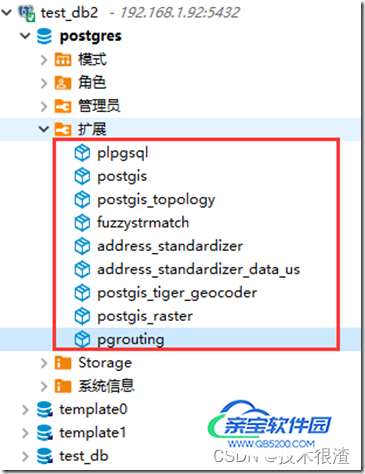
十二、安装uuid-ossp插件

postgres=# create extension “uuid-ossp”;
ERROR: could not open extension control file “/opt/pgsql12.2/share/extension/uuid-ossp.control”: No such file or directory
步骤1:安装uuid依赖包
[root@Location-01 ~]# yum -y install e2fsprogs-devel uuid uuid-devel libuuid-devel
## 步骤2:执行编译配置
[root@Location-01 ~]# cd /usr/local/src/postgresql-12.2/ [root@Location-01 postgresql-12.2]# pwd /usr/local/src/postgresql-12.2 [root@Location-01 postgresql-12.2]# ./configure --prefix=/opt/pgsql12.2 --with-uuid=ossp
步骤3:编译安装uuid-ossp
[root@Location-01 ~]# cd /usr/local/src/postgresql-12.2/contrib/uuid-ossp/ [root@Location-01 uuid-ossp]# pwd /usr/local/src/postgresql-12.2/contrib/uuid-ossp [root@Location-01 uuid-ossp]# make && make install
步骤4:检测是否成功
postgres=# create extension "uuid-ossp"; CREATE EXTENSION
postgres=# select * from pg_available_extensions;
name | default_version | installed_version | comment
------------+-----------------+-------------------+-------------------------------------------------
plpgsql | 1.0 | 1.0 | PL/pgSQL procedural language
plperl | 1.0 | | PL/Perl procedural language
plperlu | 1.0 | | PL/PerlU untrusted procedural language
plpython2u | 1.0 | | PL/Python2U untrusted procedural language
plpythonu | 1.0 | | PL/PythonU untrusted procedural language
uuid-ossp | 1.1 | | generate universally unique identifiers (UUIDs)
(6 rows)
总结
加载全部内容